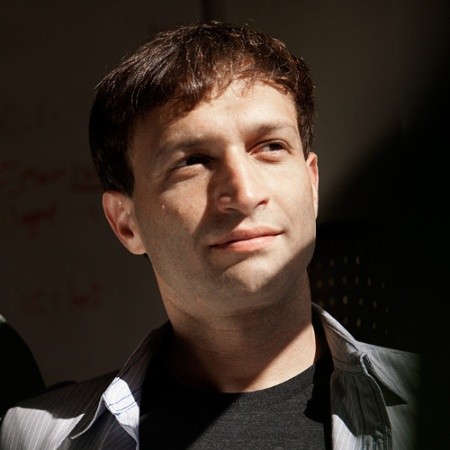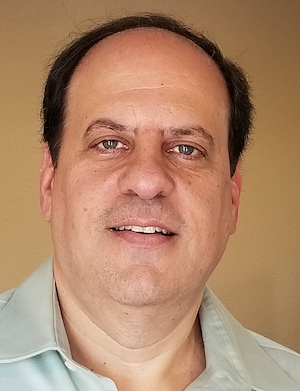 Unfortunately, good code won't speak for itself. Even the most elegantly designed and well-written codebase that solves the most pressing problem in the world won't just get adopted on its own. You, the open source creator, need to speak for your code and breathe life into your creation. That's where technical writing and documentation come in. A project's documentation gets the most amount of traffic, by far. It's the place where people decide whether to continue learning about your project or move on. Thus, spending time and energy on documentation and technical writing, focusing on the most important section, "Getting Started," will do wonders for your project's traction.
Unfortunately, good code won't speak for itself. Even the most elegantly designed and well-written codebase that solves the most pressing problem in the world won't just get adopted on its own. You, the open source creator, need to speak for your code and breathe life into your creation. That's where technical writing and documentation come in. A project's documentation gets the most amount of traffic, by far. It's the place where people decide whether to continue learning about your project or move on. Thus, spending time and energy on documentation and technical writing, focusing on the most important section, "Getting Started," will do wonders for your project's traction.
Latest News
How To Write Effective Documentation For Your Open Source Project
- Login to post comments
The Need for Speed - It's Time to Act!
 As a society we also need to get moving on the population level as well - and the sooner the better! In his fascinating genomic epidemiology detective work Trevor Bedford conducted based on the COVID-19 research he and his team had done in the Bedford lab in Seattle WA, he concluded that the narrow testing that was done in the Seattle area in the early days of the Coronavirus spread allowed the virus to spread faster. In contrast, the Coronavirus testing-blitz in South Korea appears to keep the death rate lower than it could be. It's time to test! The FDA gave high-tech labs the green light to operate tests before receiving any agency review or authorization and both Quest Diagnostics and LabCorp already announced that they have test in the market. But according to CDC, as of March 8 there were only 1,707 tests performed in the US vs. 189,236 in South Korea.
As a society we also need to get moving on the population level as well - and the sooner the better! In his fascinating genomic epidemiology detective work Trevor Bedford conducted based on the COVID-19 research he and his team had done in the Bedford lab in Seattle WA, he concluded that the narrow testing that was done in the Seattle area in the early days of the Coronavirus spread allowed the virus to spread faster. In contrast, the Coronavirus testing-blitz in South Korea appears to keep the death rate lower than it could be. It's time to test! The FDA gave high-tech labs the green light to operate tests before receiving any agency review or authorization and both Quest Diagnostics and LabCorp already announced that they have test in the market. But according to CDC, as of March 8 there were only 1,707 tests performed in the US vs. 189,236 in South Korea.
- Login to post comments
Coronavirus and the Recurring Mistake of Fighting the Wrong Wars
 What do the coronavirus and Navy ships have in common? For that matter, what do our military spending and our healthcare spending have in common? More than you might think, and it boils down to this: we spend too much for too little, in large part because we tend to always be fighting the wrong wars.I started thinking about this a couple weeks ago due to a WSJ article about the U.S. Navy's "aging and fragmented technology." An internal Navy strategy memo warned that the Navy is "under cyber siege" by foreign adversaries, leaking information "like a sieve." It grimly pointed out...
What do the coronavirus and Navy ships have in common? For that matter, what do our military spending and our healthcare spending have in common? More than you might think, and it boils down to this: we spend too much for too little, in large part because we tend to always be fighting the wrong wars.I started thinking about this a couple weeks ago due to a WSJ article about the U.S. Navy's "aging and fragmented technology." An internal Navy strategy memo warned that the Navy is "under cyber siege" by foreign adversaries, leaking information "like a sieve." It grimly pointed out...
- Login to post comments
3 Steps For Product Marketing Your Open Source Project
 Product marketing for COSS is materially different from product marketing for proprietary software and from general marketing practices like ads, lead generation, sponsorships, booths at conferences and trade shows, etc. Because the source code is open for all to see and the project's evolutionary history is completely transparent, you need to articulate—from a technical level to a technical audience—how and why your project works. Using the word "marketing" in this context is, in fact, misleading. It's really about product education. Your role is more like a coach, mentor, or teaching assistant in a computer science class or a code bootcamp than a "marketing person."
Product marketing for COSS is materially different from product marketing for proprietary software and from general marketing practices like ads, lead generation, sponsorships, booths at conferences and trade shows, etc. Because the source code is open for all to see and the project's evolutionary history is completely transparent, you need to articulate—from a technical level to a technical audience—how and why your project works. Using the word "marketing" in this context is, in fact, misleading. It's really about product education. Your role is more like a coach, mentor, or teaching assistant in a computer science class or a code bootcamp than a "marketing person."
- Login to post comments
VA Tackles Medical Device Vulnerabilities and Cyberthreats
 VA recently signed partnerships with Massachusetts General Hospital and Shepherd University. This collaboration's research will address cybersecurity and compatibility measures needed in devices used for VA patient care. It will also refine existing and emerging cybersecurity standards and practices for network connectable medical devices, medical data systems and other related technology. Beyond VA, the agreements could have a broad impact in standardizing cybersecurity and safety requirements within the larger public health sector. VA is contributing to industry-wide awareness of both medical device vulnerabilities and threats, while applying further tests of the Underwriters Laboratories criteria and other emerging standards.
VA recently signed partnerships with Massachusetts General Hospital and Shepherd University. This collaboration's research will address cybersecurity and compatibility measures needed in devices used for VA patient care. It will also refine existing and emerging cybersecurity standards and practices for network connectable medical devices, medical data systems and other related technology. Beyond VA, the agreements could have a broad impact in standardizing cybersecurity and safety requirements within the larger public health sector. VA is contributing to industry-wide awareness of both medical device vulnerabilities and threats, while applying further tests of the Underwriters Laboratories criteria and other emerging standards.
- Login to post comments
Why the Founder of Apache Is All-in on Blockchain
 Brian Behlendorf is perhaps best known for being a co-founder of the Apache Project, which became the Apache Software Foundation. Today, he's the executive director of the Hyperledger Foundation, an organization focused on enterprise-grade, open source, distributed ledgers (better known as blockchains). He also says he "put the first ad banner online and have been apologizing ever since." In a recent conversation on my podcast, Behlendorf talks about the goals of the Apache Project, the role of foundations generally, and his hopes for blockchain...
Brian Behlendorf is perhaps best known for being a co-founder of the Apache Project, which became the Apache Software Foundation. Today, he's the executive director of the Hyperledger Foundation, an organization focused on enterprise-grade, open source, distributed ledgers (better known as blockchains). He also says he "put the first ad banner online and have been apologizing ever since." In a recent conversation on my podcast, Behlendorf talks about the goals of the Apache Project, the role of foundations generally, and his hopes for blockchain...
- Login to post comments
Mortal Coils: Why We Must Stop Tolerating Failing Health Tech
 Today, data are scattered across thousands of database tables within any single electronic medical record (EMR) system, but also across dozens of other systems that hold pharmacy data, imaging data, insurance data, laboratory data, etc. Pretty much none of it is available on demand in any given clinical setting. The inevitable result of this disconnected galaxy of data "black holes" is mistakes, or if not outright mistakes, well-intentioned missteps based on lack of background data within the acute-care setting.
Today, data are scattered across thousands of database tables within any single electronic medical record (EMR) system, but also across dozens of other systems that hold pharmacy data, imaging data, insurance data, laboratory data, etc. Pretty much none of it is available on demand in any given clinical setting. The inevitable result of this disconnected galaxy of data "black holes" is mistakes, or if not outright mistakes, well-intentioned missteps based on lack of background data within the acute-care setting.
- Login to post comments
CMS Promoting Interoperability in 2021: All good things must come to an end?
 We have spent years involved with the management of the Center for Medicare and Medicaid Services (CMS) Electronic Health Records (EHR) Incentive Programs which were created by the HITECH Act (2009). These programs were recently renamed Promoting Interoperability (PI) programs. In a nutshell, these programs were tied to the Medicare and Medicaid insurance programs and provided financial incentives over a number of years to ambulatory providers and hospitals to adopt and use EHRs. Vendors submitted their technology products for testing and certification that they performed specific functions and could exchange data using specified message formats...But the provisions of the HITECH Act are due to expire on September 30, 2021 (see CMS timeline). These are the programs affected...
We have spent years involved with the management of the Center for Medicare and Medicaid Services (CMS) Electronic Health Records (EHR) Incentive Programs which were created by the HITECH Act (2009). These programs were recently renamed Promoting Interoperability (PI) programs. In a nutshell, these programs were tied to the Medicare and Medicaid insurance programs and provided financial incentives over a number of years to ambulatory providers and hospitals to adopt and use EHRs. Vendors submitted their technology products for testing and certification that they performed specific functions and could exchange data using specified message formats...But the provisions of the HITECH Act are due to expire on September 30, 2021 (see CMS timeline). These are the programs affected...
- Login to post comments
How The VA and UL Created an Orchestrated Approach to Healthcare Cybersecurity Assurance
 In today's high-risk Internet of Medical Things (IoMT) and cyber-warfare environment, one tool or individual line of cybersecurity solutions would likely not be able to satisfy the requirements for security and safety put forth by an HDO; hence, the aggregation of solutions branded as MedFusion was derived. The VA UL CRADA discovered that healthcare is strengthened in terms of security and safety of connectable medical devices through in-depth cybersecurity defense...Learning from the VA and UL cybersecurity research results, with respect to product-level management of vulnerabilities and threats to medical devices and their associated software algorithms, we can impact the quality of adoption of electronic health records and other data collection systems connected to the IoMT and consumers...
In today's high-risk Internet of Medical Things (IoMT) and cyber-warfare environment, one tool or individual line of cybersecurity solutions would likely not be able to satisfy the requirements for security and safety put forth by an HDO; hence, the aggregation of solutions branded as MedFusion was derived. The VA UL CRADA discovered that healthcare is strengthened in terms of security and safety of connectable medical devices through in-depth cybersecurity defense...Learning from the VA and UL cybersecurity research results, with respect to product-level management of vulnerabilities and threats to medical devices and their associated software algorithms, we can impact the quality of adoption of electronic health records and other data collection systems connected to the IoMT and consumers...
- Login to post comments
The Current State of Blockchain and Where it's Going
 In an earlier post, Blockchain evolution: A quick guide and why open source is at the heart of it, I discussed the first generations of blockchains: the public Bitcoin and cryptocurrency blockchains, followed by the Ethereum blockchain capable of executing programs ("smart contracts"), leading to permissioned versions of code-executing blockchains (e.g., Hyperledger Fabric, Quorum). Let's step back into the blockchain jungle and take a look at the current state of the ecosystem and the projects trying to solve some of the limitations of blockchain technology: speed and throughput, cross-blockchain information and value exchange, governance, and identity and account management.
In an earlier post, Blockchain evolution: A quick guide and why open source is at the heart of it, I discussed the first generations of blockchains: the public Bitcoin and cryptocurrency blockchains, followed by the Ethereum blockchain capable of executing programs ("smart contracts"), leading to permissioned versions of code-executing blockchains (e.g., Hyperledger Fabric, Quorum). Let's step back into the blockchain jungle and take a look at the current state of the ecosystem and the projects trying to solve some of the limitations of blockchain technology: speed and throughput, cross-blockchain information and value exchange, governance, and identity and account management.
- Login to post comments